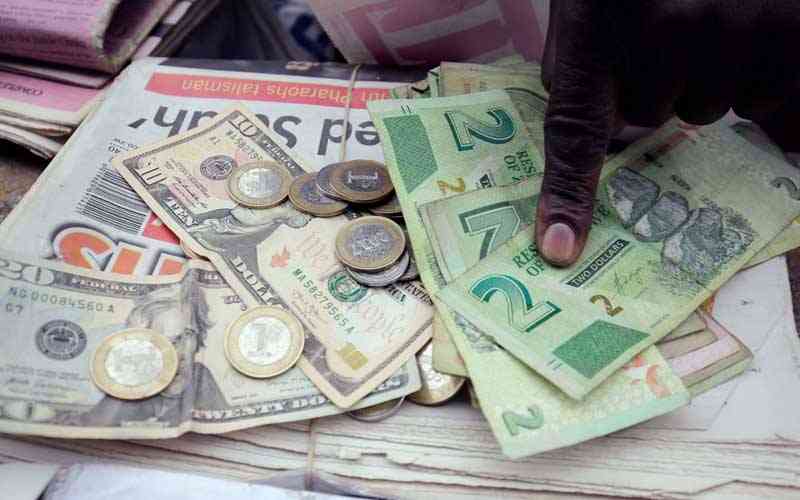
THE Zimbabwe dollar has taken a battering in the past month with economists attributing the depreciation of the local currency to increased money supply after private and public sector employees were paid their annual bonuses.
According to a survey, the local currency has depreciated by 50% on the much-used parallel market since the unveiling of the 2024 national budget by Finance minister Mthuli Ncube on November 30.
A day before the budget announcement where Ncube outlined bonuses for civil servants, the parallel forex rate stood at US$1:$8 000.
Since November 30, the local currency has depreciated by 50% to US$1:$11 500 to $12 000 on the commonly used parallel market.
However, when consumers sell the greenback to parallel forex dealers, the depreciation is lower at 33,33% to US$1:$7 700 or $8 000.
The depreciation of the Zimbabwe dollar has widened the premium between the official and unofficial forex rate by over 100%.
Officially, the forex rate on Friday stood at US$1:$5 935, 4572, a 2, 51% depreciation since the day before the budget announcement.
Parallel market money dealers who work along Harare’s Julius Nyerere Street told Standardbusiness that the skyrocketing parallel market rates was due to huge demand for the greenback from workers that recently received their annual bonuses.
- DPC pays out $139 million
- Zimdollar shortage hits market
- Nedbank Zim profit surges
- Editor's Memo : Clean up procurement corruption
Keep Reading
“Right now we just have to maximize on the situation,” said a dealer who requested to remain anonymous.
“As for me, I am not going to my home village for Christmas and I will be here running the streets.
“Almost everyone is getting his or her salary in both US dollars and Zimbabwean dollars.
“When someone gets Zimbabwean dollars they always want to buy US dollars.
“There is a lot of money, there are a lot of Zimbabwe dollars circulating right now.
“The rate might as well go as low as $15000 by the time we get to the New Year.
“So, for now, we are charging $12 000 depending on who I am dealing with.”
Prominent economist Prosper Chitambara attributed the volatility in the foreign currency exchange market to a growth in money supply following the payment of bonuses to public and private sector workers.
“I think the payment of bonuses by the government and the private sector has increased the money supply in the economy, which caused the increase in the demand of the US dollar thus resulting in the depreciation of the local currency,” Chitambara said.
“But, I think it is really about the payments and the increase in the liquidity of the local currency that has triggered the parallel rate.
“When one gets paid in Zim dollars you convert that money into US dollars.”
Another economist Godfrey Kanyenze said the huge payments made by the government for the emergency infrastructure rehabilitation programmes also fueled the depreciation of the local currency.
“You know that this has always been happening, and we are not surprised. Here we are dealing with two contradictory policies,” Kanyenze said.
“Firstly, it’s the one that is trying to create a stable macro-economic environment and the second one is the one implementing emergency infrastructure rehabilitation programmes.
“With that and all the other obligations, huge payments are supposed to be made and it creates a wave in the market.”
He said increasing money supply was the elephant in the room.
“We also need to check who is getting money at a certain point in time which increases the money supply in the economy,” Kanyenze added.
Veteran economist Tony Hawkins said Zimbabwe’s economy continued to weaken and the trend was likely to continue next year.
Hawkins said the government could end up borrowing money to finance public sector salaries and drought relief as the budget was not enough.
“Recently, I predicted that the rate would weaken and inflation would increase,” he said.
“Nothing has changed.
“The RBZ manages the rate for as long as it can but then the local currency has resumed devaluing when the premium gets as high as it is now — about 60% to 70%,” Hawkins said.
“All the early warning signs are negative — poor and late rains, weaker commodity prices, lengthening delays in paying importers at the auction, rising inflation, and a slowdown in the formal retail sector.”







